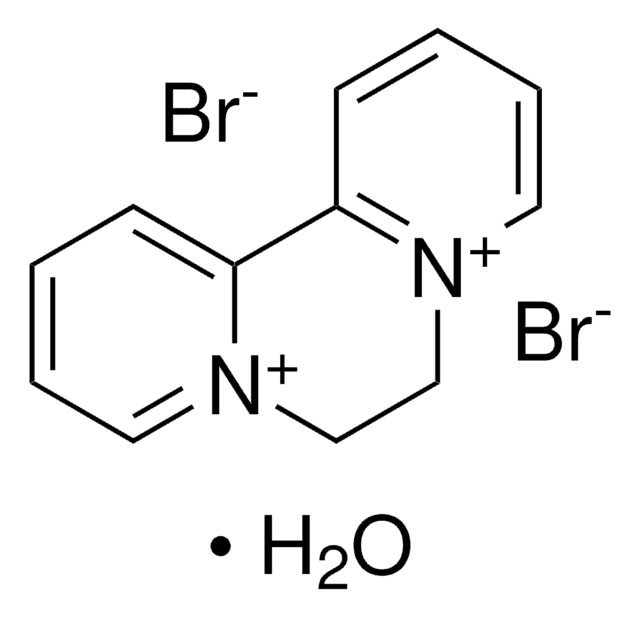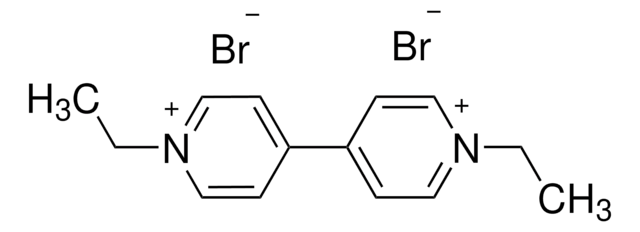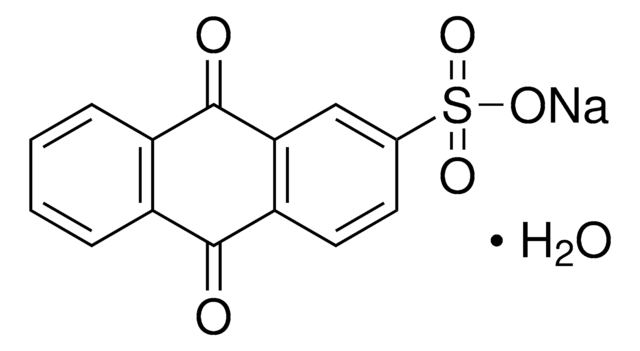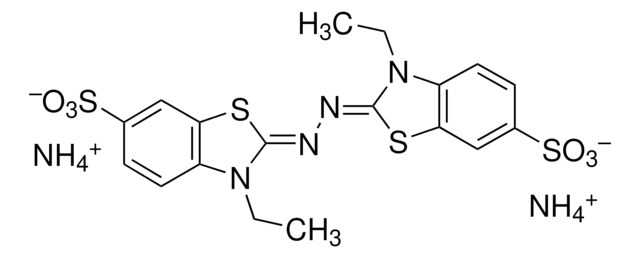Key Documents
856177
Methyl viologen dichloride hydrate
98%
Synonim(y):
1,1′-Dimethyl-4,4′-bipyridinium dichloride, Gramoxone, Paraquat dichloride
About This Item
Polecane produkty
Próba
98%
Postać
solid
mp
>300 °C (lit.)
ciąg SMILES
[Cl-].[Cl-].[H]O[H].C[n+]1ccc(cc1)-c2cc[n+](C)cc2
InChI
1S/C12H14N2.2ClH.H2O/c1-13-7-3-11(4-8-13)12-5-9-14(2)10-6-12;;;/h3-10H,1-2H3;2*1H;1H2/q+2;;;/p-2
Klucz InChI
RLGVBTFWTZJYIL-UHFFFAOYSA-L
Powiązane kategorie
Opis ogólny
Zastosowanie
It can also be used as a mediator in the synthesis of ultrasmall bimetallic PdAg nanocatalysts.
Hasło ostrzegawcze
Danger
Zwroty wskazujące rodzaj zagrożenia
Zwroty wskazujące środki ostrożności
Klasyfikacja zagrożeń
Acute Tox. 2 Dermal - Acute Tox. 2 Inhalation - Acute Tox. 3 Oral - Aquatic Acute 1 - Aquatic Chronic 1 - Eye Irrit. 2 - Skin Irrit. 2 - STOT RE 1 - STOT SE 3
Organy docelowe
Respiratory system
Kod klasy składowania
6.1A - Combustible acute toxic Cat. 1 and 2 / very toxic hazardous materials
Klasa zagrożenia wodnego (WGK)
WGK 3
Temperatura zapłonu (°F)
Not applicable
Temperatura zapłonu (°C)
Not applicable
Środki ochrony indywidualnej
dust mask type N95 (US), Eyeshields, Faceshields, Gloves, type P2 (EN 143) respirator cartridges
Wybierz jedną z najnowszych wersji:
Masz już ten produkt?
Dokumenty związane z niedawno zakupionymi produktami zostały zamieszczone w Bibliotece dokumentów.
Produkty
LEP umożliwiają szeroki zakres ważnych zastosowań, w tym czujniki, elastyczne wyświetlacze LED i urządzenia oświetleniowe, optyczne lasery pompujące i potencjalnie polimerowe lasery diodowe.
Light-Emitting Polymers
Graphene has emerged as the new wonder material. Being only one atom thick and composed of carbon atoms arranged in a hexagonal honeycomb lattice structure, the interest in this material has exploded exponentially since 2004 when it was first isolated and identified using a very simple method.
Nasz zespół naukowców ma doświadczenie we wszystkich obszarach badań, w tym w naukach przyrodniczych, materiałoznawstwie, syntezie chemicznej, chromatografii, analityce i wielu innych dziedzinach.
Skontaktuj się z zespołem ds. pomocy technicznej










